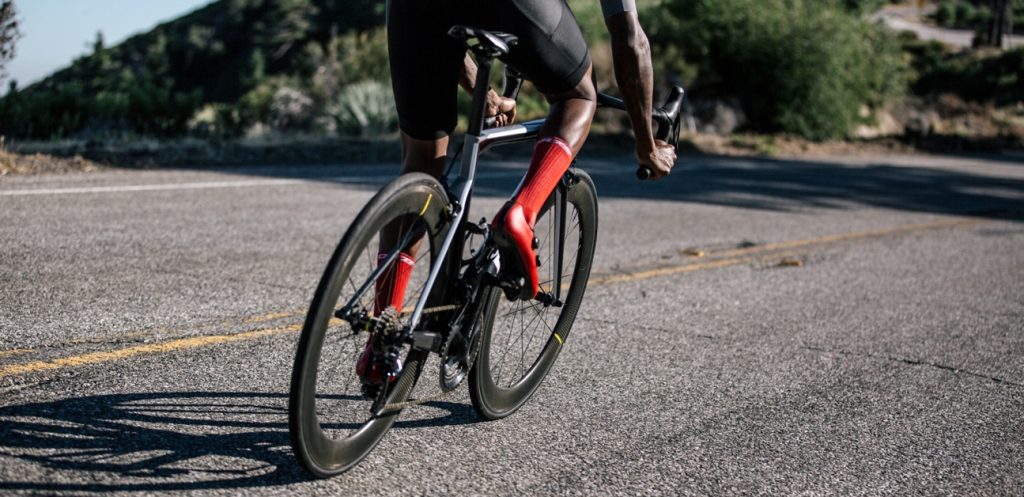Improve Training Accuracy
A power meter can have a massive impact on any type of cycling training as it gives you accurate, real-time, and immediate data that adds tremendous value in helping push your fitness limits toward specific performance goals. They will measure the actual force you produce on the pedals, whereas most traditional methods use estimated figures based on heart rate or perceived exertion which, as a result can be more inaccurate and inconsistent; this figure is then used to work out how hard you are working over time.
With the use of a power meter, training efforts can be analyzed in great detail. This allows a rider to hold a precise power output for 10-minute intervals during interval training to ensure that each effort is at the appropriate intensity level to elicit specific physiological adaptations. This data-supported method can be utilized to dial in the training load to improve endurance, sprint strength, or climbing effectiveness.
Monitoring Fatigue and Recovery A second application of power meters that can be important from a practical standpoint is the ability to monitor fatigue and recovery. Lowering your power output for the same perceived effort can be a sign of fatigue, or that you could use more recovery. A greater amount of carried sustainable power means better fitness. When training, cyclists can use these measured values to tailor their training differently so they don’t overtrain and are at peak performance on race day.
During Races
Power meters are a great tool for pacing in race scenarios, such as in TT’s or long solo efforts. Cyclists can also use this method to prevent going too hard too early, burning through matches before they are out on course, by taking an educated guess at what power output they would be able to sustain. For example, a rider with a functional threshold power (FTP) of 280 watts can look to ride at FBOT- probably just holding 280 watts as a steady average rather than going too hard too soon and burning some matches for the fireworks of the finale.

Technical Improvement and Efficiency Power meters helps with improving pedal stroke and efficiency as well as power outputs. Cyclists can use the system by evaluating the power balance between their left and right legs to detect what might not be in perfect harmony, and rectify it to improve pedaling efficiency and decrease injury potential. If data shows a 55/45 power distribution between the right and left leg, targeted exercises and conscious correction during rides can lead to a more balanced 50/50 distribution, which would be beneficial for overall mechanical efficiency.
Ensure Data Consistency
Power meters are invaluable to ensure you have your training data as consistent as possible helping in keeping your progress continuous and informed changes that need to be made. The more accurate a power meter the more an athlete can trust that the data provides consistent feedback amongst different training conditions, weather and bikes.
Dependable Data in Various Conditions One of the best features of using a power meter is it provides consistent data independent of outside conditions. Measures like heart rate can also be impacted by things like temperature, how hydrated you are and even stress, sometimes making workout zones unreliable. On the other hand, a power meter literally measures how much power you are giving to your bike, so the data is consistent whether you are training indoors and on a windy day outside.
Time Trialling Comparison: Closely measuring performance means data capture is consistent, so you can compare performances across the ages and between bikes. If you wish to test the efficiency of new equipment or training methods this is extremely helpful. When a cyclist changes from a road setup to a TT setup the system becomes able to essentially directly compare between the power output they create on either setup to see which is faster for certain types of efforts (flat time trials versus climbing).
Measuring Performance Improvements With consistent, objective data, cyclists can more accurately measure even the smallest performance gains over a period of time. A rider whose Functional Threshold Power (FTP) rises from 250 Watts to 265 Watts over a training period has demonstrably improved by exactly 6%, because it was directly measurable, as opposed to the differences between tools or conditions.
Improve Training Results
Power meters are a central component of this formula, providing the accurate feedback necessary to train in particular power zones that advance all kinds of training results and aspirations. This is a very efficient method of training that results in greater improvements in performance in less time.
Power Zones Training
Power zones training by color-coordinated workout ranges designed to stimulate the muscular effort that elicits each of the responses mentioned above. If a cyclist is seen training in the ‘tempo’ zone, involving 76% and 90% of their Functional Threshold Power (FTP), they are working on aerobic endurance. Session structure: It develops your VO2 max and raises power above threshold, which in turn raises the lactate threshold.
Instant Feedback for Adjustment
While riding, power meters provide instant feedback on effort and enable cyclists to adjust their workloads in real time. As you might imagine; this is very useful for interval training in which you need to hit a certain wattage output. This means that if a given workout calls for 1-minute intervals at 350 watts, the rider can quickly tell whether they are doing too few or too many of these and adapt accordingly to maximize training stimulus.
Personalised Training Plans
Training plans alter to the cyclists’ current fitness levels as data is collected over time. When consistent power data is provided, training plans can be tailored for each cyclist. For example, testing may identify an FTP of 300 watts, so future workouts might help develop this number through structured interval sessions, long endurance rides and recovery spins all measured with exact power outputs that place the cyclist in the appropriate zones for their desired outcome.
Adapt To Different Training Types
Power meters are essential when it comes to preparing for different types of training, and they provide cyclists with the best possible performance in various cycling disciplines – from sprinting to long-distance endurance. Power meters are tools that help athletes better understand the demands of different forms of cycling, and thus signal ways to guide training for each.
Sprinting Precision
For sprinters, the ability to produce maximum power for short periods of time is essential. For example raw punch during a sprint for measuring peak power or seeing your watts over time if you are big on the sprints. For example, 10-second maximal sprints with complete recovery all at over 1200 watts (actual output depending on an individual’s ability) can be set as a clear, objective metric to measure improvements in your sprint.
Endurance efficiency
Long-distance cyclists train at sustained power outputs to maximise the energy cost over hours of effort. A power meter ensures the cyclist rides at a constant wattage – 250 watts over 5 hours, ensuring that he will never surge and be working purely within his aerobic threshold. This data proves valuable as you tune your effort and energy systems for long events like centuries or gran fondos.
Use a Power Meter to Improve Your Climbing
You can also improve your climbing by practicing climbing at your sustainable max. Power Plateau – For climbers: 300 watts on any continuous climb of 20 minutes or longer – simulating race conditions and use the experience to develop climbing endurance, speed.

Time trial training
For time trials, the ability to hold a steady power output near an FTP throughout the race length is very important. From power data volume, cyclists can tailor a pacing strategy that will prevent blowing up by distributing the effort out in just the right amount. One example might be that, riding 90% of FTP for the 40-kilometer time trial keeps you in the performance sweet spot rather than entering the red zone too early.
Improve Riding Performance
A power meter is a staple tool for cyclists who want to ride harder, and smarter. By providing accurate and actionable data, these on-board tools help us riders identify our weaknesses and ensure lasting improvements.
Efforts during Races When you are out there racing, the way that this affects you is it helps you to learn how to stress a little bit more at certain times and seize a winning opportunity. One example is a cyclist using their power meter to never exceed known power thresholds during a race, avoiding early fatigue. If a rider zone 4 is 300w and they sit just below this during crucial periods of a race, then they leave themselves plenty in reserve to smash the end or top next time round.
Boosting Your Intervals
Interval training with a power meter is a great way to boost anaerobic capacity and recovery. Cyclists can benefit from hitting and sustaining these efforts, which in turn will translate to more speed and power, by aiming their energy at precise power outputs such as 450 watts for one minute followed by three minutes at 200 watts.
Balancing Training Load
A power meter assists cyclists to strike the right balance between hard training and recovery. Tracking weekly power output data enables cyclists to plan their training volume and intensity according to solid numbers rather than intestine feeling. The likelihood of you overtraining and getting injured decreases a lot if you train this way which makes it possible for you to keep training consistently, resulting in greater performance improvements.
Power meters are often used by time trialists and triathletes to optimize their bike fit and riding position for maximal aerodynamics and power, more commonly known as fine-tuning of the aerodynamic position. Modifications such as lowering the handlebar or adjusting seat angle can be tried out in separate training sessions, with the power meter providing the data showing how each of these variations contributes to performance. If you can detect a decreasing non-power (non-hr) activity over rough ground less bouncing around, along with more watts (power), whilst still maintaining the same RPE than this could be a sign that your body’s work is put to good use at other end of aerodynamic position power equation.





